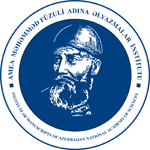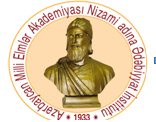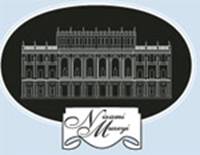Feb 24, 2022 | 03:09 /
26 February – Seventh anniversary of Khojali massacre
By Sevda Mehraliyeva
A young pretty girl was having her burnt hands treated in the Baku traumatology hospital’s plastic surgeries department. Once asked why she was wearing her hair like that and advised to change it, the girl replied quietly running her fingers through her hair: “I am from Khojali”. There was no hair from the right hand side of the head to the central and only skin could be seen… I was appalled at the sight. For one moment, I felt embarrassed for my question. Probably, I was also ashamed for the entire mankind.
The sound of the tragic night of February 25-26, 1992 reverberated in my ears: “Baku, Baku! Do you copy. I am Khojali. Khojali is engulfed in flames. The enemy is narrowing down the circle around us. Do you read me? I am saying we are in flames, flames… We need help!” This was the last telephone scream from Khojali on the night of February 25, 1992…
Khojali in flames
Khojali was a small city of 7,000 people located in the currently occupied Upper Karabakh. Being a part of the Agdam-Askaran-Khankandi-Shusha line, the town represented strategic importance. The only airport of Karabakh was close to Khojali as well. The town was located on top of high mountains. Armenians lived in woody villages, which surrounded Khojali. Khojali was entirely populated by Azerbaijanis. The town hindered Armenia’s plan of occupation of Karabakh. To capture Shusha, it was first necessary to obliterate Khojali. The attack plan was implemented by the 366th infantry regiment of Russian 4th army’s 23rd division. In summer 1991, colonel Zarvigarov was appointed as commander of the regiment, 49 officers in which were Armenians. Along with military machinery and personnel, the main attack force concentrated in the hands of major S. Ohanyan and major Y. Nabokin.
The population of the town was not at all prepared for the attack on February 25. To stand the offensive from 5 directions, there were only local police and volunteers of the National Guard. The balance of forces was not equal. All the weaponry at the disposal of town defenders were rifles, guns and sub-machine guns. In an unequal battle, the Khojali airport and the town were razed and hundreds of people perished in the first hours of the massacre. The desperate people turned to the dark forest for refuge. Seeing this, Armenian thugs blocked all the forest roads. That night, no one would be let go.
One of the last to be brought to the slaughter site on that night was Russian military journalist Viktoria Ivelyova. She wrote: “Going first were heavy machines and artillery, then pedestrian force, while the punishment unit of Armenian troops was bringing up the rear. A line of hundreds of people was being taken to Khankandi… Those were Azeri prisoners.
The Khojali tragedy embedded in memories with the following figures:
613 people were killed.
106 of them were women.
70 of them were aged people.63 of them were children.
56 were brutally slaughtered.
8 families were eradicated.
Only one person was left in each of 27 families.
130 children lost one parent, while 25 children lost both.
230 families were deprived of bread-winners.
487 people, including 76 children, were wounded by enemy bullets
577 people were crippled, including 63 children, 76 teen-agers. 200 people had their limbs amputated.
1,275 people were taken hostage, 1,165 of them have still not been returned and the fate of 150 people (also 68 women and 26 children) is unknown.
With these figures, Armenians have written the most disgraceful and brutal page in the history of wars.
Witnesses say:
I have not been to Khojali. To depict the horror of the tragedy I am using my pen. But I also know hundreds of people who witnessed and lived through that night. Let those who have seen the atrocities of Armenians say what they feel…
One of those who survived that night was Adil Mehmanov, who later on perished as a hero in Shusha. He lost his 3 sons, 2 daughters and wife, while he himself was taken hostage. “I have never been afraid of dying. But to become a hostage in Armenian captivity is even more horrible. Hundreds of hostages were taken from among peaceful residents of Khojali. I was among them… An Armenian officer wearing Soviet uniform selected those of us who were dressed in military outfit and put them to wall. Then, heads of all of them were cut off in front of the rest of us. I was dressed in civilian clothes that day.
Hostage Sariyya Mahmudova recalls: “We were brought to an Armenian graveyard. 7 Azerbaijani youngsters were offered as sacrifice in front of an Armenian grave. Their heads were cut off. After this, in front of parents’ eyes, children were brutally murdered and their bodies thrown into a gutter with a bulldozer. The blood-thirsty thugs brought 2 more Azeri soldiers and hollowed out their eyes with a screwdriver”.
Major Kravets would write from the site of the holocaust later on: “On February 26, I was taking the wounded out of Stepenakert by helicopter and was on my way back when my eyes suddenly caught on red spots on the ground. My engineer cried out: “Look, there are women and children there”. I myself saw about 200 dead bodies scattered all over the bill, while armed people were walking among the corpses. Then we tried to pick up some of the dead bodies. There was an Azeri policeman with us. He found his son with his skull smashed. Another child we could pick up before we were fired at had his head cut off. I saw maimed bodies of women, children and old people everywhere”.
Journalists report from Khojali
On February 28, having overcome many obstacles, a group of journalists finally visited Khojali and was able to record what they witnessed. The national hero of Azerbaijan, journalist Chingiz Mustafayev, who was also killed in one of the battles for Karabakh, would say: “Hundreds of people were slaughtered… most of them were shot point-blank. There were dead bodies of children aged between 2 and 5, women and old people. Judging by the corpses, no one even tried to escape, everyone was murdered cold-bloodedly and wildly. It is also clear that some were taken aside and killed alone, while others were killed together with their families. There were 7-8 bullet holes in many corpses, one of which would always go through the head. Heads of most of men were smashed. Such corpses were innumerable.
We first came to the site of the carnage by helicopters on February 28. While in the sky, we could see an area of 500 square meters completely covered with dead bodies. As soon as we stepped out of the helicopter, shooting started. The police who accompanied us could only recover 4 corpses. What we saw made us all speechless. We could not believe our eyes. When we returned here on March 2 with foreign journalists we saw the same situation. Most of the corpses were named out of recognition. Probably, the heartless murderers enjoyed torturing even the dead Azerbaijanis”.
French journalist Jean-Eve Junette wrote from the site on March 2: “We have witnessed the Khojali tragedy… We have seen hundreds of defenders, children, women and old people maimed…Even flying above the place we could record what we saw. We had to stop shooting after we were fired at by Armenians. But what we have seen defies description. I have heard and read a lot about German fascism, but I have never seen 5-6 year-old kids, pregnant women and old people murdered like this”.
A correspondent of “Izves-tiya” mewspaper V. Belykh wrote: “From time to time, corpses of relatives are brought to Agdam in exchange for living hostages. I have not seen such a nightmare: hollowed out eyes, cut off ears, smashed skulls, bundles of several corpses hauled by tanks and ATCs. There was no end to humiliation…”
Let no one think that Azerbaijanis did not try to defend Khojali…
More than one hundred Azeri soldiers were killed defending the Khojali airport from an attack led by Russia’s 366th regiment. 5 of those killed that night are national heroes of Azerbaijan. 4 out of 20 volunteer soldiers perished in an attempt to free Azeri hostages being taken to Khankandi.
The world has heard of the horror of a snowy February night in Khojali. Why was it silent? Why wasn’t this carnage given a historical assessment? Why weren’t the thugs, who slaughtered peaceful population simply for their ethnic affiliation, punished? As an Azerbaijani, I have many questions to ask of world nations and international community.
All wars have their rules. No one can deny this. Soldiers and weapons come against each other. Naturally, there are casualties, blood is shed. But children and women are never deliberately killed… A Russian soldier who refused to fight and took off his white shirt asking for a chance to take children and the old away from the action zone was immediately shot dead. An Armenian soldier takes a great enjoyment in slaying. An Armenian soldier can cut off an infant’s head, rape a 5 year-old child and tear away another kid’s skin… These are facts. It was an Armenian soldier possessing all these qualities who perpetrated the massacre of peaceful Azerbaijan population of Khojali that night. It is for this reason that Khojali is neither Khatyn, nor Songmy, nor Moabith, nor Buhenwald, nor Bosnia. The Khojali tragedy is more horrible. The only fault of the 7,000 peaceful population was that they were Azerbaijanis living on the land of their forefathers. They were an obstacle in Armenia’s from sea to sea” obsession.
More than 30,000 Azerbaijanis, regardless of military, have been killed in the 30-year war. Azerbaijanis were not afraid to die, but they did not want to fall into Armenian’s hands. It is for this reason that hundreds of women preferred to be killed to being taken hostages.
The corpses left in the forest either froze or were found by wild animals. The fate of 150 is still unknown.
The Khojali tragedy is turning 30 years. For 30 years, the world community has failed to give legal assessment to the tragedy, which will remain as one of the dark pages in the history of Azerbaijan, a page to be erased.









